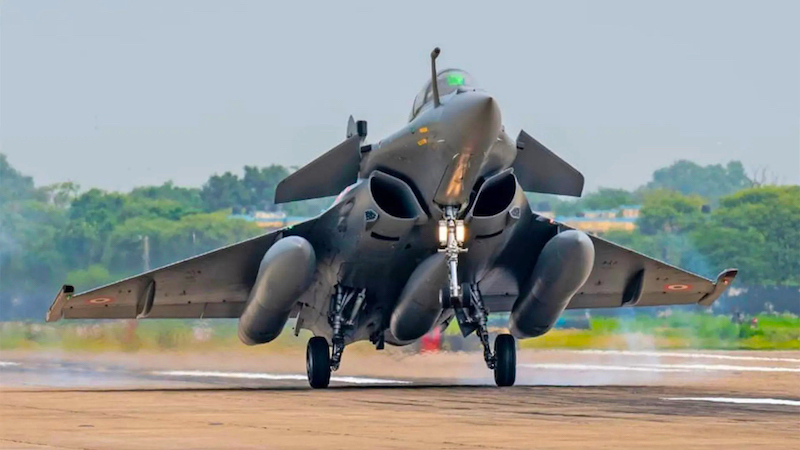China Orchestrates Global Disinformation Campaign Against French Rafale Fighter Jets
In the aftermath of Operation Sindoor, a four-day military confrontation between India and Pakistan in May 2025, a sophisticated disinformation campaign targeting the French-made Rafale fighter jet unfolded on the global stage. French military and intelligence officials have revealed that Chinese diplomatic missions worldwide spearheaded this coordinated effort, aiming to discredit the Rafale’s performance and boost the appeal of Chinese-manufactured alternatives. The campaign, combining traditional diplomatic lobbying with advanced online manipulation, focused on nations considering the Rafale for purchase, particularly Indonesia, a significant existing customer. This revelation highlights the increasingly complex landscape of international arms competition, where information warfare plays a crucial role in shaping perceptions and influencing purchasing decisions.
The disinformation campaign capitalized on Pakistan’s unsubstantiated claims of downing three Rafale jets during the conflict. While these assertions were refuted by Dassault Aviation, the Rafale’s manufacturer, and the French Air Force, they provided fodder for Chinese diplomats to sow doubt about the aircraft’s capabilities. Chinese defense attachés in various embassies actively engaged with officials in countries considering the Rafale, emphasizing the alleged poor performance of the jet and highlighting the advantages of Chinese alternatives. This diplomatic push was strategically targeted at undermining confidence in French military technology and bolstering China’s position in the global arms market.
Complementing the diplomatic maneuvers was a massive online disinformation campaign. French researchers uncovered a network of over 1,000 newly created social media accounts disseminating pro-Chinese narratives, including manipulated images of purported Rafale wreckage, AI-generated content, and fabricated combat simulations. This multi-layered approach amplified the diplomatic messaging, creating an echo chamber of misinformation designed to erode the Rafale’s reputation. The synergy between diplomatic lobbying and online manipulation demonstrated a high degree of coordination and sophistication in the information warfare strategy.
The French defense ministry characterized the campaign as a deliberate attempt to promote Chinese military equipment at the expense of the Rafale. They emphasized that the Rafale, a highly successful export product, was not randomly targeted but strategically chosen due to its symbolic value as a flagship French defense program. Attacking the Rafale was seen as an attack on France’s strategic autonomy and industrial credibility. The ministry’s statement underscored the broader geopolitical implications of the campaign, highlighting the interconnectedness of defense industrial interests and national image in the international arena.
While China vehemently denied the allegations, the coordination between diplomatic messaging and the online disinformation campaign strongly suggests state-level involvement. The incident underscores the growing use of information warfare in the modern era, where diplomatic channels and social media platforms become intertwined battlegrounds for shaping global narratives. China’s alleged actions showcase a concerted effort to leverage the information environment to advance its strategic interests and challenge Western influence, particularly in the Indo-Pacific region.
The incident has significant implications for France’s defense industry, which relies heavily on Rafale exports to sustain its economic and strategic objectives. The campaign threatens to disrupt potential sales and undermine France’s efforts to strengthen security partnerships in Asia, where China’s growing dominance poses a challenge. For India, the experience highlights the vulnerability of defense partnerships to information warfare and the importance of robust information sharing and verification protocols. The episode underscores the increasingly competitive global arms market and the sophisticated tactics employed by geopolitical rivals to gain an edge. As nations navigate this complex landscape, discerning credible information from strategically crafted misinformation becomes paramount for informed decision-making.


